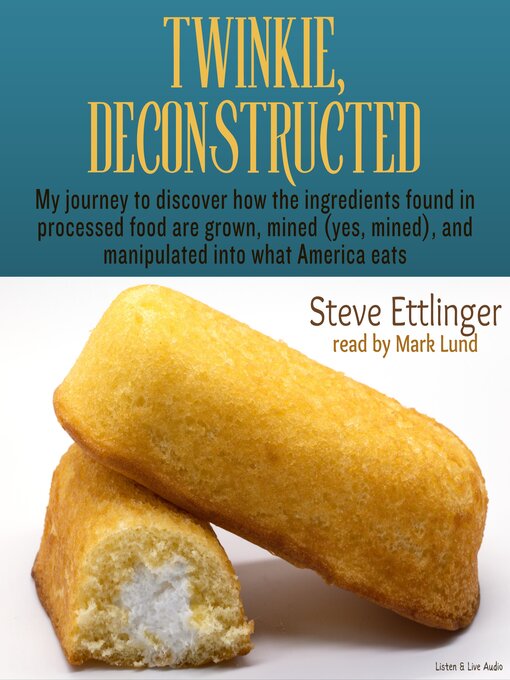Like most Americans, Steve Ettlinger eats processed foods. And, like most consumers, he often reads the ingredients label—without a clue as to what most of it means. So when his young daughter asked, "Daddy, what's polysorbate 60?" he was at a loss—and determined to find out. From the phosphate mines in Idaho to the corn fields in Iowa, from gypsum mines in Oklahoma to the vanilla harvest in Madagascar, Twinkie, Deconstructed is a fascinating, thoroughly researched romp of a narrative that demystifies some of the most common processed food ingredients—where they come from, how they are made, how they are used—and why. Beginning at the source (hint: they're often more closely linked to rock and petroleum than any of the four food groups), we follow each Twinkie ingredient through the process of being crushed, baked, fermented, refined, and/or reacted into a totally unrecognizable goo or powder with a strange name—all for the sake of creating a simple snack cake. An insightful exploration into the food industry, if you've ever wondered what you're eating when you consume foods containing mono- and diglycerides or calcium sulfate (the latter, a food-grade equivalent of Plaster of Paris) this book is for you.
Twinkie, Deconstructed
My Journey to Discover How the Ingredients Found in Processed Foods Are Grown, Mined (Yes, Mined), and Manipulated Into What America Eats
-
Creators
-
Publisher
-
Release date
May 1, 2007 -
Formats
-
OverDrive Listen audiobook
- ISBN: 9781593163754
- File size: 168221 KB
- Duration: 05:50:27
-
-
Languages
- English
-
Reviews
-
Publisher's Weekly
January 1, 2007
In this delightful romp through the food processing industry, Ettlinger, who writes on consumer products (The Complete Illustrated Guide to Everything Sold in Hardware Stores
), says, "Believers of urban legends take note.... Twinkies are not just made of chemicals," nor will their ingredients allow them to last, "even exposed on a roof, for 25 years." But what exactly their ingredients are, and how they come from places like Minnesota and Madagascar to be made into what Ettlinger calls "the uber-iconic food product, the archetype of all processed foods," is the subject of his book. Each chapter looks at individual ingredients, in the same order as on a Twinkie package, so Ettlinger finds himself traveling to eastern Pennsylvania farms to study wheat, as well as to high-security plants that manufacture highly toxic chlorine used in minute amounts to make the bleached flour that is "the only kind that works in sugar-heavy" Twinkies or birthday and wedding cakes. His exploration of the manufacturing processes of cellulose gum ("perfect for lending viscosity to the filling in snack cakes—or rocket fuel"), for example, cleverly reveals how Twinkie ingredients "are produced by or dependent on nearly every basic industry we know." -
AudioFile Magazine
It's the quintessential snack treat, the subject of myth and legal proceedings. The Twinkie stands for all that is right and, perhaps, wrong with American processed food. The author examines each of the ingredients of the Twinkie, starting from the most common all the way to the unlisted "less than 1 percent" additives, such as color. He also examines where each ingredient comes from. It's a delicious lesson in organic chemistry, world trade, and gastronomic history. Mark Lund narrates with enthusiasm. He warms to the subject, and his tone engages listeners. He could have rendered the book as stale as a Twinkie past its sell-by date. Instead, like his topic, he is bouncy and fresh. R.C.G. (c) AudioFile 2007, Portland, Maine
-
Loading
Why is availability limited?
×Availability can change throughout the month based on the library's budget. You can still place a hold on the title, and your hold will be automatically filled as soon as the title is available again.
The Kindle Book format for this title is not supported on:
×Read-along ebook
×The OverDrive Read format of this ebook has professional narration that plays while you read in your browser. Learn more here.


